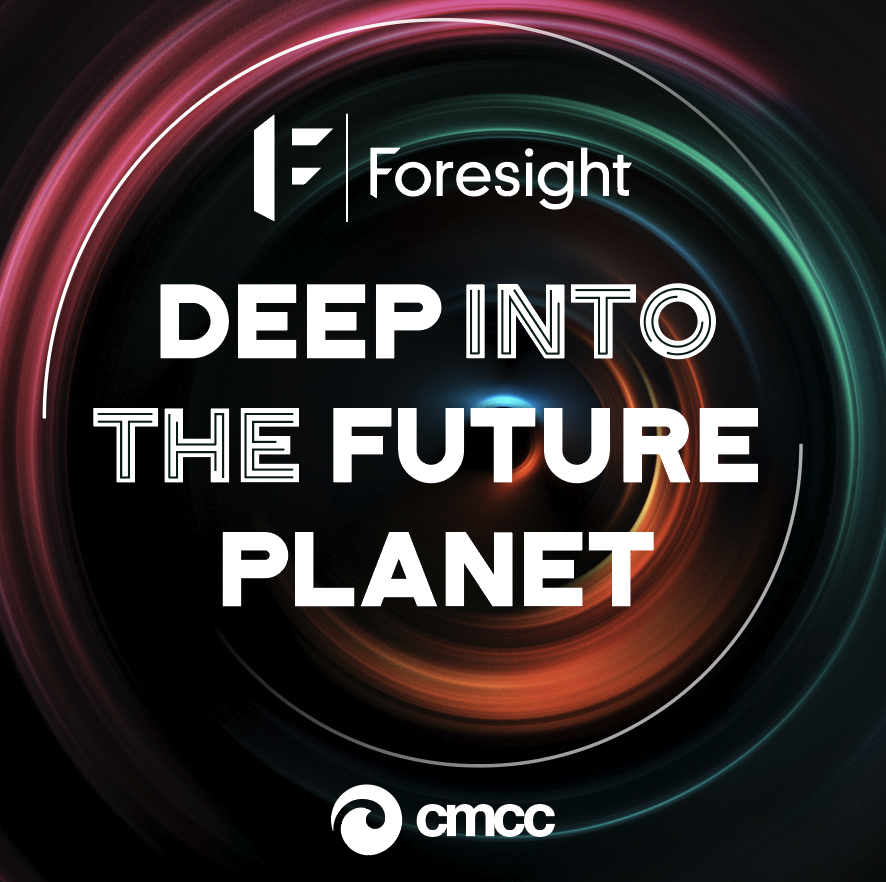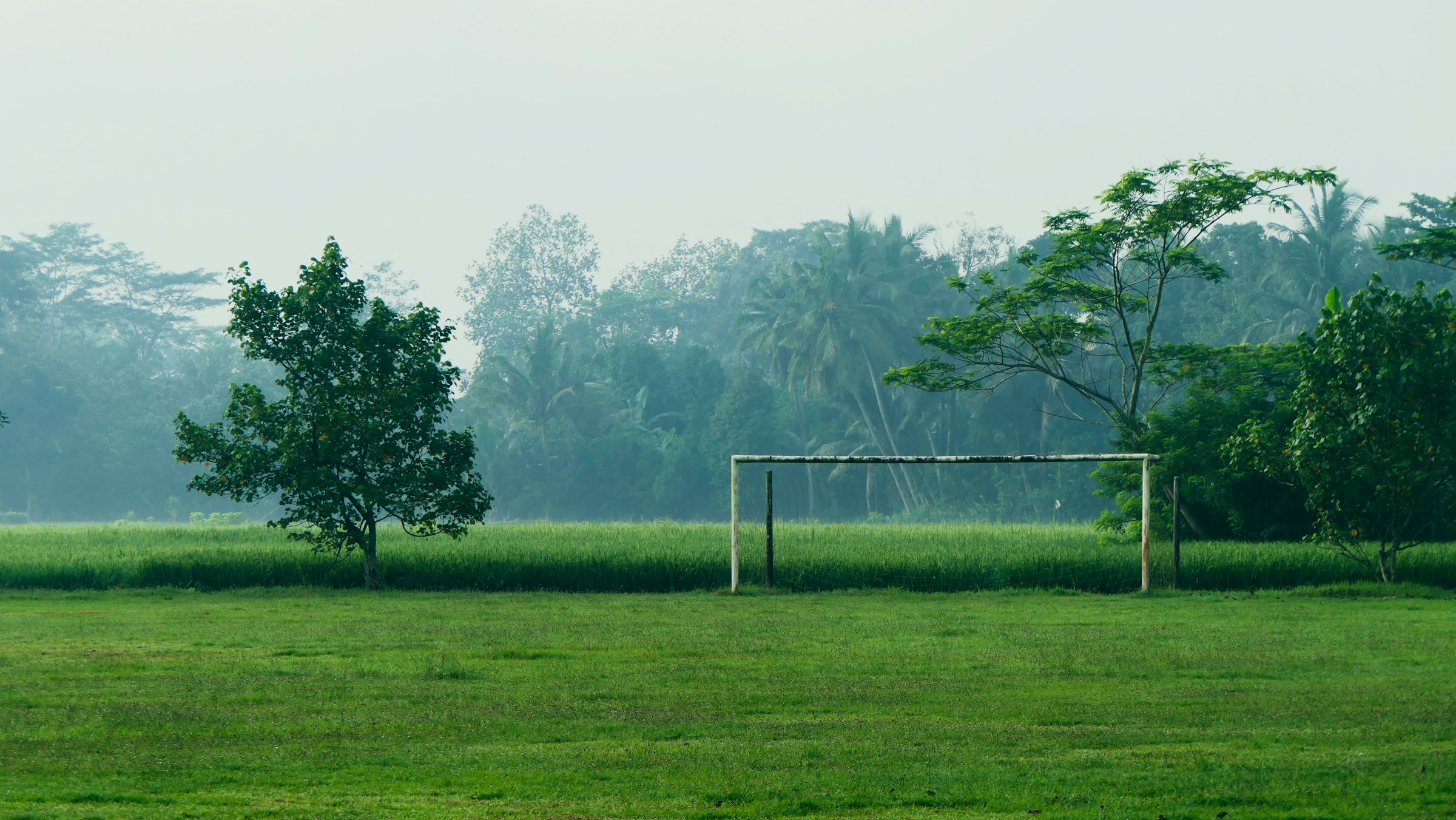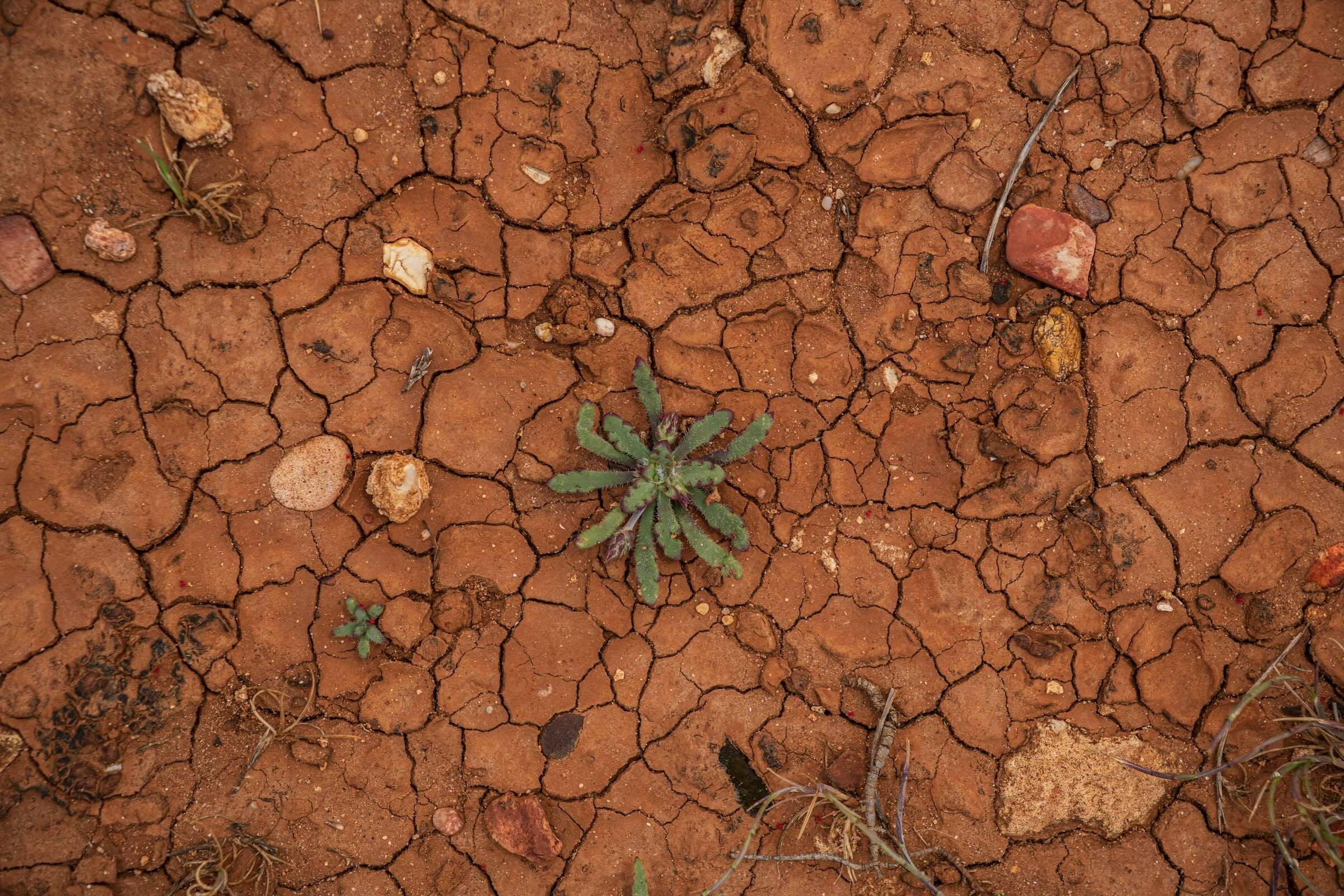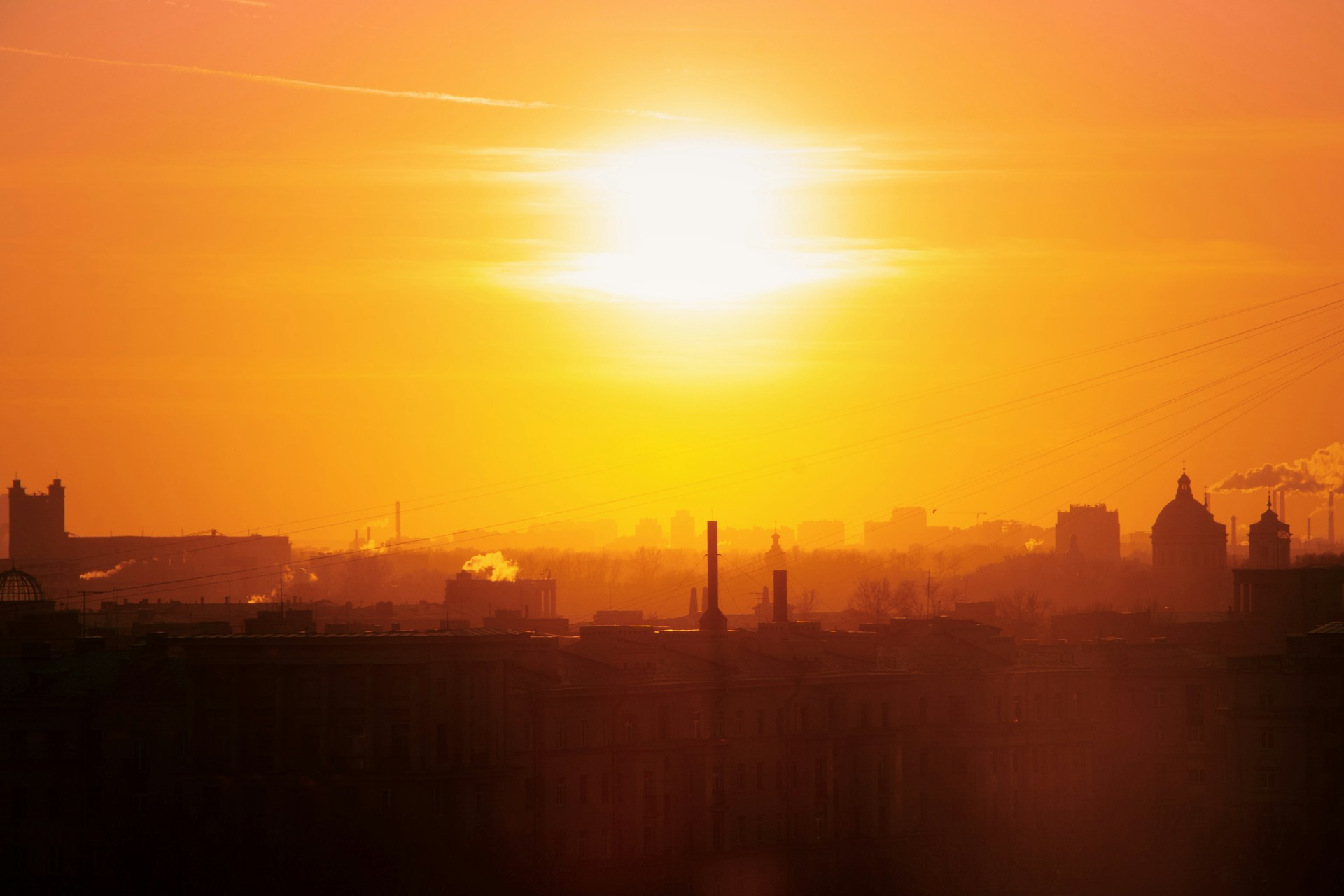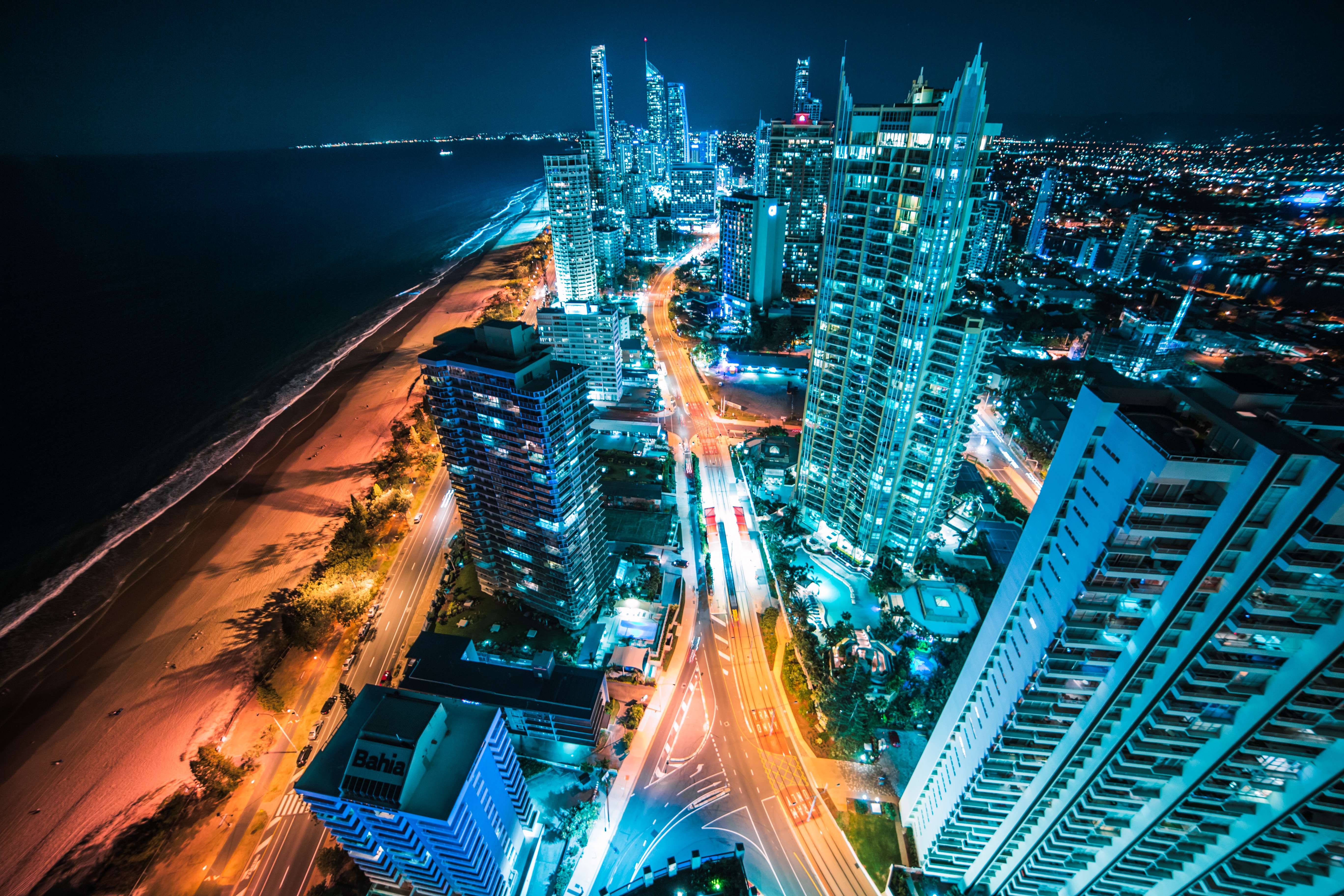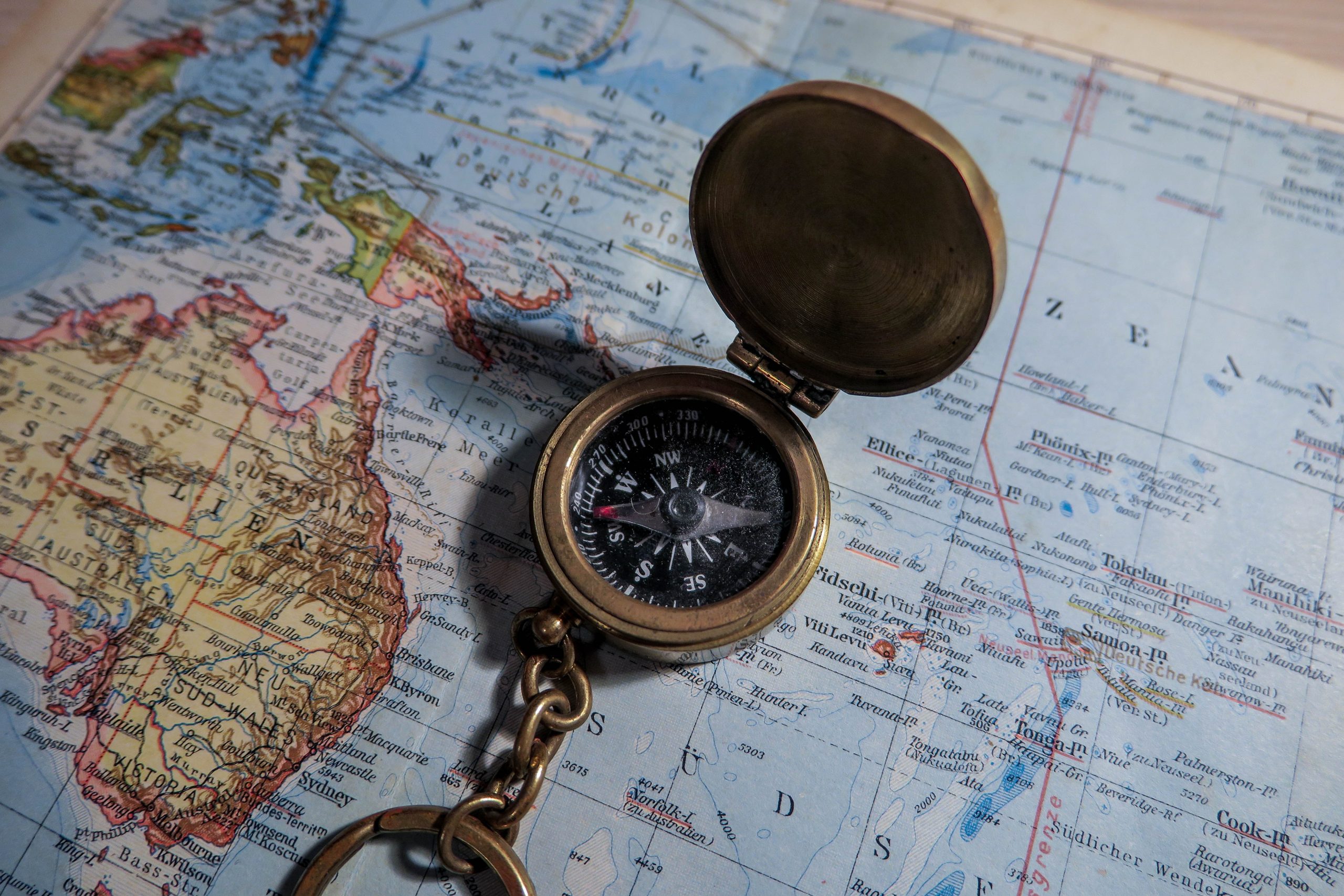This episode is where Earth sciences meet journalism to address overarching solutions that already exist, ones that need global and local consensus, and those that are built ground up by local communities. With Kate Marvel (Project Drawdown), Fara Warner (Solution Journalism Network), and investigative journalist Jelena Prtorić.
Foresight – Deep into the Future Planet, a podcast produced by the CMCC and FACTA.
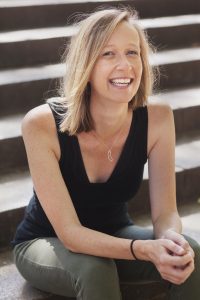
Kate Marvel, Ph.D., is a senior climate scientist at Project Drawdown, the world’s leading resource for climate solutions. A former cosmologist, Kate received a Ph.D. in theoretical physics from Cambridge University, where she was a Gates Scholar.
Before joining Project Drawdown, Kate spent seven years as a research scientist at the NASA Goddard Institute for Space Studies and Columbia University and held positions at Lawrence Livermore National Laboratory and Stanford University. Prior to Columbia University, Kate worked at Stanford University, the Carnegie Institution, and Lawrence Livermore National Laboratory.
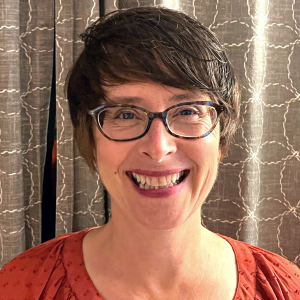
Fara Warner is Director of Climate at the Solution Journalism Network. She leads SJN’s work in transforming climate journalism from unsolvable and apocalyptic to rigorous evidence-based reporting that catalyzes communities to action to help mitigate, adapt and be resilient in the face of the global climate crisis.
She holds a master’s degree from Columbia University’s Graduate School of Journalism. She has written for The Wall Street Journal, The New York Times, Fast Company and other national and international publications.
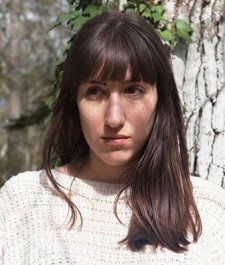 Jelena Prtorić is a freelance investigative journalist who has reported for a variety of publications in English, French and her native Croatian.
Jelena Prtorić is a freelance investigative journalist who has reported for a variety of publications in English, French and her native Croatian.
Her work has focused mainly on gender and human rights, migration, the environment/climate, culture and social movements, through an investigative and (often) cross-border lens.
As of 2020, Jelena has been part of the Arena for Journalism in Europe team. She is also an occasional podcaster and translator of graphic novels.
Podcast transcript
Jelena Prtorić: I’m not saying we will have a bright future, but I’m saying, yes, there are so many people fighting for that bright future.
Fara Warner: We are in for a very rough ride and we need solutions and responses that help us be adaptive to a changing climate and one that has already changed.
Kate Marvel: I think the climate story is the most important story happening right now, and it also affects every other story. I actually think every story is a climate story.
Every story is a climate story. But how do we tell this story? How do we want this story to be told by our children and grandchildren? The future of our planet is being shaped by today’s ideas, solutions, and decisions. The future is now.
I am Giulia Bonelli, science journalist, and this is Foresight – Deep into the Future Planet, a podcast produced by the CMCC Euro-Mediterranean Centre on Climate Change and FACTA.
Today, Elisabetta Tola and I are closing the first series of our podcast. And we are taking one last jump straight into the future, which has pretty much everything to do with climate. Through the voices of a scientist and two journalists, we look into different approaches to the climate stories of our present and future times.
Kate Marvel: I think we live in a really special time right now. It’s kind of the best of times and the worst of times. It’s the worst of times because we see the effects of climate change. I remember ten years ago, we talked about climate change as though it was something that was going to affect our grandchildren or affect polar bears or something far away or remote. And that’s obviously no longer the way we talk about it. The increasing and more severe climate disasters that are happening, I think, has really focused attention on climate change. And in that respect, it is the worst of times. The climate is changing, and it is affecting all of us, not all of us equally, but it is here. But at the same time, if you had told me 10 or 15 years ago that there would be a concerted movement of activists focused on climate change, that governments would be starting to listen, and for example, wind and solar would be the cheapest form of energy available… I probably wouldn’t have believed you. I would have said, that’s, you know, that’s utopia, that’s the best case scenario, and that will never happen. And now we’re in a world where it’s happening. So the problems are getting much worse, but the solutions are getting much better. And I thought now is the time. Now is the time to take the leap from doing basic science, understanding the problems to trying to solve these problems.
This is Kate Marvel. She is the senior scientist for Climate at Project Drawdown, in the U.S. Project Drawdown aims to guide policy and investments in climate solutions. It provides powerful scientific guidance into which climate actions we should prioritize to stop climate change.
Kate Marvel: My background is in physics, specifically in theoretical physics, which is the study of the entire universe. And I realized during my Ph.D. that the Earth is my favorite part of the universe by far. So I moved into Earth science and I started studying climate. I’ve worked a lot with climate models, looking at the physics of the Earth system and how it responds to changes. And in that capacity, I’ve spent a lot of time studying the problems of climate change.
I joined Project Drawdown because I love what they do. We use science to understand climate solutions and we work with a wide variety of other actors, community activists, companies, multilateral organizations to try to think about how to get these solutions adopted as quickly and effectively and equitably as possible.
Fara Warner: What are the ways in which I can help my community be informed and be knowledgeable not just about the problem, but how they may respond to that problem?
This is Fara Warner. After a long career as a business journalist at the Wall Street Journal, she joined the Solution Journalism Network – an independent, non-profit organization in the U.S. promoting rigorous and compelling reporting about responses to social problems.
Fara Warner is currently the Solution Journalism Network Climate Director. And the question we just heard – how can I help my community be informed not only about the problem, but how they may respond to that problem? – is what has been driving Fara’s work in the last years.
Fara Warner: I want to recognize that solutions journalism, small ask small day has been practised in newsrooms and in communities, particularly community newsrooms, for generations. This is nothing new. We may call it by other names. We call it service journalism. We may call it community journalism. What we’ve done is put a framework around it, and we hope to always honor the people and the work that’s come before us. But for us, solutions journalism is really focused around a framework of four key ingredients. The four pillars, as we like to call them, is what’s the response and how did it happen? What’s the evidence of effectiveness, most importantly, for those communities most affected by the response and the solution? What are the limitations?
Every solution story for us really requires a deep explanation of what the limitations and challenges are to this work and to these solutions. And oftentimes people will say to us, well, if we put in the limitations, then it looks like the solution doesn’t work. It’s like, no, all solutions have limitations to them. And when you highlight the limitations, a few things happen. One, particularly in climate, it helps guard against greenwashing because there is no silver bullet. There is no perfect solution when it comes to what is a societal global issue that we all face.
Embracing the complexity of climate problems and related solutions is one of the main assets of Solution Journalism Network. There is no simple answer or magic recipe to the climate crisis. But for journalists reporting on the climate crisis, it is crucial to have enough understanding of the scientific data and evidence available. Again, Fara Warner.
Fara Warner: We don’t advocate for one solution over another. What we want to do is give enough knowledge and information and training to journalists so that they come in with a foundational set of sources of understanding the science behind, so that when they go into stories to cover it, they feel like they really have a grounding in it.
To promote the scientific understanding of climate problems and solutions, the Solution Journalism Network partners with many actors, including Project Drawdown, where Kate Marvel works.
After the latest Cop negotiations and Ipcc reports, it has become clear that, from a scientific perspective, the possible solutions to the climate crisis are already there, Kate Marvel says.
Kate Marvel: The solutions are already there on several levels. So from a physical science perspective, we are incredibly sure that it is greenhouse gases, carbon dioxide, methane, nitrous oxide gases. It’s these that are warming the planet. And so from a physical science perspective, the solution is very clear and very obvious. Just stop doing that. Stop putting those in the atmosphere. Now, obviously, that’s easier said than done, but if you actually look at the sectors where these greenhouse gases are coming from, very roughly, they’re about a quarter from energy generation, about a quarter from food, agriculture and land use, about 20% from industry and the rest from transportation, buildings and kind of other applications. And once you start looking at it and that sector perspective, you start realizing that, oh, wow, we already have solutions in all of these different sectors. So, for example, you know, energy production, burning fossil fuels produces carbon dioxide. That’s what the chemical reaction of combustion that produces energy, that’s what it does. And so if we stop using fossil fuels, we can cut the carbon dioxide from the energy sector. And, you know, that’s kind of going to take a two pronged approach. First, we need to implement energy efficiency measures, which are kind of like a low hanging fruit. They’re really a win-win solution. We save money, we use less energy. That’s great. At the same time, it’s also a win-win solution to move to lower carbon or zero carbon sources of power. Wind and solar are the cheapest form of energy available right now, and they are arguably the future.
So there are a lot of solutions already out there. And so I would go further than that. I would not just say that climate solutions already exist. I would say that climate solutions that make an incredible amount of sense economically, for our health, for our industries, those already exist, too.
The application of these solutions at the global level starts from the complicated realm of climate negotiations, where there is still a long way to go.
But another key aspect is the narrative around climate solutions – and climate stories in general.
Jelena Prtorić: The stories don’t stop at borders, right? Pollution of pretty much anything is a very good example for that. I mean, if you have a river that runs across like Italy and Slovenia, and the river is polluted in Italy, you know, the pollution is going to reach Slovenia at some point.
This is Jelena Prtorić. She is a freelance investigative journalist who has reported for various publications in English, French and her native Croatian. She is part of the Arena for Journalism in Europe, a foundation established in the Netherlands to support cross-border collaborative journalism. Which means, journalists working with other journalists across geographical borders, and journalists working across professional borders with scholars or scientists as well as with civil society.
Jelena Prtorić: Well, first of all, it’s very helpful to work with colleagues in other countries because they might have a different perspective than we do. They might have different data, different methods. And if we put all of these methods together, if we put all of our knowledge together, I think we can work better together and we can get better results in research.
And then I think the story itself, you know, once when we have we put together the research from all the different countries and we can actually see the patterns and we can connect the dots across the globe or across Europe or whatever the scale of your research might be, I think once when we have that story that is not just a local one, that is not just a national one or a regional one, where we can actually see like how that story impacts people in many different countries, I think that story then is much more powerful and it can have a much greater impact.
One of Jelena’s most recent works applying this cross-border collaborative journalism approach is an investigation called “Troubled Waters”. She worked with an activist to explore the level of water pollution due to intensive agriculture in Europe.
Jelena Prtorić: The investigation “Troubled Waters” started actually with a map. So the European Environment Agency publishes a lot of different databases, a lot of different maps every year. And one of the maps that was published on their website showed the exceedances in the levels of pesticides in the European waters. When I looked at the map, there were a lot of rivers and lakes that were completely red – red being, you know, water that is not in a good state. It looked frightening at the beginning. So actually, I wanted to understand it better, what it meant. It’s not so alarming, I should say that from the very beginning. But this map was sort of at the very origin of this project because I started wondering how much we actually know about the impact of intensive agriculture on the state of our waters in Europe. That was the initial question. And it’s a question that I don’t know if I would have ever got the chance to answer if it weren’t for the opportunity that I got through a fellowships called Bertha Challenge, which pairs up journalists and activists. And I co-applied with Luisa Izuzquiza, who is a researcher and transparency activist for FragDenStaat, an organization based in Germany, although Luisa herself works from Brussels and mostly works on Brussels politics. Me, myself, I I worked on this with the support of Arena for Journalism in Europe. With Luisa and our host organizations we sort of embarked on this almost year-long project to try to understand a bit better in which ways agriculture impacts the state of our waters in Europe. We published our stories and the website Troubled Waters in December 2022, and we are still hoping to actually continue the work on this topic.
If you want to know more, do have a look at the “Troubled Waters” investigation – you can find the link in the podcast description. But what we want to highlight here is the process behind the whole investigation – something that might be very well applied to many different climate topics with the overall goal of telling stories that affect many of us in different ways around the world.
Jelena Prtorić: When we started working on this, we decided that I would try to move ahead with the data work and with the policy work. And when I say policy work, I mean researching policy, while Louisa will do what she usually does, and that is actually tries to get the documents released from different EU or state authorities. And in this case, that actually meant submitting many, many, many Freedom of Information requests to, first of all, the European Commission. Then also some were submitted to other EU bodies, or, for instance, the European Environment Agency, with the idea behind it that we wanted to get a better insight into how the EU policies around waters were being created.
So if you go to the website Troubled waters, what you can see is in terms of resources is a part where it is sort of explained how you can submit an FOI request as well. This is useful. I mean, many journalists do that already and know how to do it already. Many civil society activists know and use that as a tool as well. But we also wanted to say we also wanted to flag which institutions one could potentially FOI in terms of water research.
And then another thing that we have on the website is this trove of documents that we got through FOI requests. A part of it is actually a very, very, very big database. And I mean, I haven’t had the time to look into all the documents that we obtained, and these are the documents that are related to the EU water legislation. And there is another set of documents that is particularly related to the EU infringement proceedings. So you have a number of countries that we looked into. For instance, you will find documents on Ireland, on Italy, on Germany, France, the Netherlands for now, because these are the countries that are big agricultural players. And we wanted to see, you know, in which way EU has been communicated with them and in which way maybe they have tried to sort of influence the ways in which they are protecting water as well. So there is all available on the website and anyone can research the databases, anyone can look for keywords or can research by the country they are interested in.
So there are potentially many other stories in the data shared by the “Troubled Waters” project – and this data is available for anyone. It goes far beyond traditional journalism. This is the kind of method that can make a difference in climate reporting, with a cross-border, interdisciplinary approach.
From her scientist’s perspective, Kate Marvel agrees that climate problems and solutions need a bigger picture, which might and should also include the collaboration between science and journalism.
Kate Marvel: I definitely see possibilities for collaboration between scientists and journalists because I think we we both do the same thing. We’re both trying to look at the evidence and try to figure out what’s true. We just do it on different timescales. Journalists have deadlines, and scientists have kind of more time to look at the evidence and try to figure out what’s going on. But essentially, we’re doing the same thing. I completely agree that we need a fuller picture of climate problems and climate solutions. A lot of times, you know, I as somebody who has worked in this field for years and thinks about this every day, if I look at certain newspapers and their climate coverage, I start to freak out. I start to think, oh, my gosh, that’s it’s a disaster. We’re doomed. There’s nothing we can do. And I, myself, as somebody who works on Climate Solutions and knows full well that there are many, many ways that we can work together to solve this problem.
But we also need to see those stories seeded all throughout society. We need it reflected in art, in movies and books. I think the climate story is the most important story happening right now, and it also affects every other story. So just like, you know, my colleagues at Drawdown say every job is a climate job. I actually think every story is a climate story. And there is definitely a role for investigative journalism. This is what is going wrong and we need to fix it right now. There’s definitely a role for solution journalists, who have a really deep understanding of here’s how we solve the problem and here’s how we overcome the roadblocks to that. But I also think there is a role for non-specialist journalists, people who write about the economy, people who write about fashion, people who write about almost anything you can think of. Their stories are climate stories, too. And I think there’s a lot of opportunity to get climate information and climate context spread really, really widely across the entire space of reporting.
At Project Drawdown, Kate Marvel and her team constantly look at the impact of climate solutions for local communities. They have a program called Drawdown Stories, which acts as a bridge between science and the people taking action to promote climate solutions. This is also at the core of the Solution Journalism Network’s work, as Fara Warner explains.
Fara Warner: We can, through solutions journalism, offer agency and give people a sense that they have a role to play in what is happening to this planet. They have a role to play in their personal actions. They have a role to play in how they vote. They have a role to play in how they required companies to do things differently. When you give someone agency, they actually have an opportunity to not be apathetic. Numbness and apathy are not the absence of emotion.
They are the overwhelming amount of emotion. It is in our nature as humans to just we turn off when when trauma is too much for us and we numb ourselves and we take a step back because it is it’s a protective measure for us when we are given agency and we feel like we can do something – that’s when we start to turn the tide. And I think that we can do that in the media and that in fact, I personally believe that that is our civic duty and our responsibility as journalists, where I think we have to be careful with solutions. And I think, you know, scientists and others who deeply investigate and look at climate is that we need to make sure that when we are reporting on climate solutions, that they really are leading up to the big systems change that we need to have happen around climate. So, you know, this isn’t easy.
What we’re seeking is transformation. At present one of our big initiatives within climate is a project called the Climate Beacon Newsroom Initiative, and we’re working with nine newsrooms in the United States on this transformational approach, which is this isn’t about doing stories, and it’s not even about doing projects. It’s really moving the solutions mindset from a project to a practice and almost at practice every day. Because one of the reasons that I think people fall prey to sort of I wouldn’t even call it solutions journalism, I would just I would just call it not very good journalism is they they forget that when you are focusing on a solution, it doesn’t mean that you need to… It means you’re not nice about it. You are interrogating it as. As. As precisely as you would the problem. And I think that moving. Moving a mindset from problem to solution is important. But also remembering that we’re not talking about solutions as if they are all silver bullets or that heroic work by a single person is going to change anything. Those are fine stories. Feel free to keep doing them, but please don’t call them solutions journalism.
The need for a big picture in climate stories. This is something Fara Warner, Jelena Prtorić and Kate Marvel all agree on. When it comes to climate solutions, journalists should never lose their critical sense, interrogating those solutions and exploring their limitations. Fara Warner told us a concrete example – and again, all the links are available in the podcast description.
Fara Warner: Lissa Harris is a reporter in the Hudson River Valley in the Catskills near where I live, actually. And when she came into an initiative that I ran from 2020 to 2022, she had this idea of wanting to cover sail freight, which is basically what it says, is how do we in some ways return to the good old days when freight moved around the world by sale as opposed to by diesel engines. Pretty much everybody seemed to cover this story of this wonderful little ship called the Apollonia that was sailing up and down the Hudson River, bringing different goods and goods to the Hudson River Valley. And she got kind of she was like, well, maybe I shouldn’t do this story right, because everybody’s doing it. And so we talked about it, and I said, but why don’t you dig deeper? And that’s what she did. And this story really walks through What it takes to actually make self freight a solution that works. And looking at all of the limitations. So it’s a great story around what the response is. She takes you absolutely through how the organization that owns Apollonia does what it does.
She actually did the math on what do you gain in terms of preventing carbon emissions? That the Apollonia wasn’t releasing into the atmosphere because it doesn’t use a fossil fuel. And at the end of the day, when she crunched the numbers and she admits that these are raw numbers and it’s looking at and it’s pricing carbon at a certain value is for a trip to sail five times roundtrip from Hudson, New York, to the New York Harbor in a 64 foot steel schooner carrying £65,000 of grain malt pumpkins and peppers.
And then she adds it all up and asks the question, What is the value of that? And it basically was a savings of U.S. dollars, $86.75. That was the prevention of 1500 pounds of carbon emissions. And she went on the conservative side. And what I think was so important about this story is that she really dug into the limitations. She crunched the numbers. She began to understand. And she is a science journalist. She really, really dove into the science of this and ask the right questions. And instead of doing kind of the pretty romantic story that we saw in a lot of news organizations, she really focused on the systems change that needed to happen to actually make self freight possible and to take it beyond this one, you know, this one schooner.
From local to global level, the stories we choose to tell and how we tell them might help shape the ways we see our present and future climate.
And with this, we close the first series of our podcast. Across 9 episodes, we interviewed 19 scientists, artists, activists, lawyers, journalists.
Together with our guests, we tried to imagine our future planet, and we followed the roots of the climate crisis through ice, water, carbon. We looked behind the scenes of the climate negotiations and climate litigations. We explored the power of local communities, investigated the cost of climate change, and had a look at possible solutions. Finding that every story is a climate story in the end.
Thank you for being with us on this planetary journey deep into our future planet in search of the best ways to forge a sustainable future.
Kate Marvel: I think there is room for optimism, but you’re not going to find optimism in a physical climate model. You have to find optimism and joy and anticipation of the future in thinking about how we are going to make this world better and how we are going to adopt climate solutions in such a way that we really maximize those co-benefits.
Jelena Prtorić: Every time you research something that’s related to climate or the environment, you do get to see how many things are not going the way they should. Despite the scientists sounding the alarm, journalist publishing stories, activists getting to the streets and protesting. So it’s very hard to just stay optimistic. But then I think that the way to go about it is to find some things to be optimistic about and work on them and work with other people with whom you could actually do some good work. I think that’s the only way to go.
Fara Warner: I think the future is already here. And for all of us, we need to recognize that we have an opportunity probably in the next 7 to 8 years to effect change. And it’s in our hands. It’s not somebody else’s job. It’s our job.
You have listened to Foresight – Deep into the Future Planet, a podcast produced by the CMCC Euro-Mediterranean Centre on Climate Change and FACTA.
The concept, interviews and texts are by Elisabetta Tola and Giulia Bonelli.
The audio editing is by Lisa Lazzarato.
The original music is by Massimo Bassan
The executive producer at CMCC is Mauro Buonocore.
Foresight – Deep into the Future Planet, is available on climateforesight.eu and wherever you listen to your podcasts.

